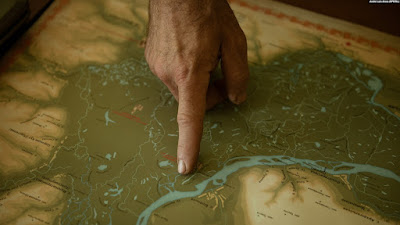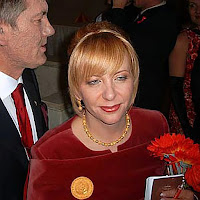 antiquities looting,black archaeology,collector,conflict antiquities,Igor Didkovsky,jewellery,Oleksandr Feldman,Platar collection,Policía Nacional,Scythian,Spain,Ukraine,Viktor Andriyovych Yushchenko
antiquities looting,black archaeology,collector,conflict antiquities,Igor Didkovsky,jewellery,Oleksandr Feldman,Platar collection,Policía Nacional,Scythian,Spain,Ukraine,Viktor Andriyovych Yushchenko
 No comments
No comments
All that glitters, isn't licit: Ukraine's unethical collectors incentivise black archaeology
As was announced in an article earlier this week, detectives with the Bureau of Economic Security, together with employees of the Security Service of Ukraine, in cooperation with the Office of the Prosecutor General, conducted an international special operation with law enforcement partners at the Policía Nacional in Spain. This resulted in the seizure of a large grouping of gold pieces incirculation in Spain which are believed to be of Scythian origin, and which are thought to date to the VIII-IVth century BCE.
As those who read our earlier article this week have seen, ARCA matched several of the recovered jewellery pieces to exhibitions which displayed 21 pieces of jewellery owned by LLC Rodovid Museum. This relatively new company is controlled by Ukrainian businessman Igor Didkovsky, who, during the presidency of now deposed Viktor Andriyovych Yushchenko, was once the director of the Art Arsenal from 2007 to 2010.
From August 2007 to June 2009, Didkovsky also headed the Viche political party, which has since changed its name to Aktsent (in 2018). Didkovsky has described himself as the president of the RODOVID group of companies as well as the Chairman of the supervisory board of ВАТ КУА ІСІ "МИР", which appears to be a closed-end venture investment fund.
Interviewed in 2012, Didkovsky boasted that he was the owner of the largest collection of Scythian gold in the world. At the time of these statements, it was reported that his collection included 4 pectorals as well as the only belt of a Scythian queen. All of which the collector claimed to have purchased for "a small amount of money."
 |
| Igor Didkovsky and the belt of a Scythian queen |
Didkovsky's collection has been displayed in 2009 in an Art Arsenal exhibition titled “From the Depths”. In 2010 it popped up briefly at a meeting of the "Club of Successful Women", in Kyiv. And lastly, over three days, the gold was displayed at the International Forum of Investment and Innovation held at the Fairmont Grand Hotel Kyiv from May 15 -17, 2013.
As has been stated in the Policia Nacional press release, the joint Spanish - Ukrainian investigation was kickstarted in 2021 with the private sale of what was described as a Scythian "gold belt with ram heads that was deposited in a safe in Madrid." If the object identified in the Spain case is the same belt of a Scythian queen mentioned by Didkovsky, we now have a Facebook social media photo identifying that specific artefact, when it was listed as part of the exhibition held at the Kyiv hotel.
Black Archaeology + wealth + unethical collecting + confllict excavations
At its peak in the Middle Ages, the Slavic kingdom of the Kyivan Rus, as Ukraine was then known, extended north from the Black Sea to encompass most of what is now western Russia. Rich in history, Ukraine's movable cultural heritage includes material from Paleolithic and Neolithic settlements, the settlements of the Trypillian people, and the rare, but glittery, gold-filled Scythian and Sarmatian burial sites.
excavated Scythian artefacts come often come from Ukraine's treasure-rich burial mounds which are concentrated along the lower Dnieper River area.
Other Scythian sites can be found on either side of the Kerch Straits between the Black Sea and the Sea of Azov, as well as in the Caucasus Mountains primarily along the Kuban River and in the contested area of Crimea.
Unfortunately, privately collecting by the country's elite who too often have an odious lack of concern for an object's origins, is all too prevalent. Following its independence, Ukraine has seen the rise of several private archaeological collections, of which only a few have any footprint in the public domain.
In addition to Didkovsky's we also have the Feldman collection, which was started by Oleksandr Feldman, and is now part of the Feldman Family Museum project in Kharkiv, the Platar and the Yushchenko collections.
Sergei Platonov died in 2005, leaving his ancient art collection, the Platar, to his heirs and business partners. While living, he often indicated that he and his colleague, politician Sergey Taruta, bought material specifically to protect Ukraine's heritage from avaricious foreigners. Like Didkovsky, Platonov didn't shy away from acknowledging to have purchased artefacts sourced via black archaeology -- the looting of archaeological sites, rather than through the ethical purchase of artefacts already in circulation from legitimate sources.
2.3 Provenance and Due Diligence
"Every effort must be made before acquisition to ensure that any object or specimen offered for purchase, gift, loan, bequest, or exchange has not been illegally obtained in, or exported from its country of origin or any intermediate country in which it might have been owned legally (including the museum’s own country). Due diligence in this regard should establish the full history of the item since discovery or production."
4.5 Display of Unprovenanced Material:
"Museums should avoid displaying or otherwise using material of questionable origin or lacking provenance. They should be aware that such displays or usage can be seen to condone and contribute to the illicit trade in cultural property."

In 2021, the Ministry of Culture of the Russian Federation issued a permit for archaeological work in occupied Crimea specifically at the site of Chersonesus. Working in an area covering some 400,000 square meters, the Institute of the History of Material Culture of the Russian Academy of Sciences, the Institute of Archaeology of Crimea of the Russian Academy of Sciences, and Sevastopol State University began excavating, in some cases using heavy equipment and improper scientific methods as trenches were cleared.
This exploration is openly reported on the Hermitage website, despite the fact that it violates the 1954 Hague Convention,
According to this report published by the State Hermatage Museum, excavations by their researchers uncovered 70 objects which were then transferred to the State Hermitage Museum in Saint Petersburg, Russia in contravention of Ukraine's cultural heritage laws.
These objects included:
"a set of dishes for a funeral meal (jugs, bowls, drinking vessels), clay lamps, glass balsamaria, bone and bronze pyxides, small household items made of non-ferrous and precious metals, jewelry and clothing decorative elements, agate and carnelian beads, pendants from Egyptian faience. Gold eyecups and mouthpieces were discovered in the urns - details of the funeral rites of noble citizens of Roman times."
It should be underscored that the provisions of the Second Protocol to the Hague Convention of 1954 for the Protection of Cultural Property in the Event of Armed Conflict states as follows:
Article 9 - Protection of cultural property in occupied territory
1. Without prejudice to the provisions of Articles 4 and 5 of the Convention, a Party in occupation of the whole or part of the territory of another Party shall prohibit and prevent in relation to the occupied territory:
(a) any illicit export, other removal or transfer of ownership of cultural property;
(b) any archaeological excavation, save where this is strictly required to safeguard, record or preserve cultural property;
(c) any alteration to, or change of use of, cultural property which is intended to conceal or destroy cultural, historical or scientific evidence.
2. Any archaeological excavation of, alteration to, or change of use of, cultural property in occupied territory shall, unless circumstances do not permit, be carried out in close cooperation with the competent national authorities of the occupied territory.
Just my way of saying to those in a position of wealth and/or power the axe forgets, but the tree remembers.
By: Lynda Albertson






0 comments:
Post a Comment